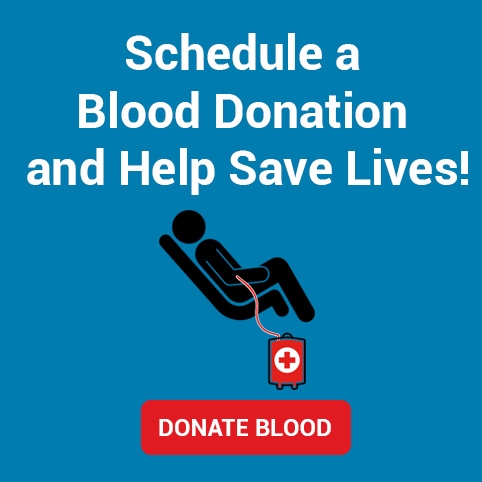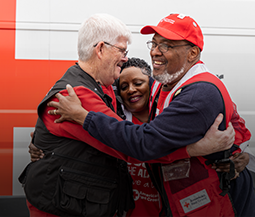The American Red Cross helps millions of people in their battle back to good health every year through its Blood Services program.
Last year the American Red Cross collected approximately 5.1 million units of blood from roughly 3 million volunteer donors. These donations were then processed into nearly 7 million blood products for transfusion to meet the needs of patients at approximately 2,600 hospitals across the country.
American Red Cross Blood Services began during World War II. England was facing possible invasion and officials realized massive quantities of blood would be needed for both the military and civilians. The U.S. Armed Forces asked the Red Cross to create and operate a national blood donor program to collect blood for shipment to the British Isles. The first bloodmobile visited the Farmingdale, New York Red Cross Chapter on March 10, 1941.
After the war, few hospitals had blood banks. Many relied on direct transfusion from donor to patient. In 1947, the Red Cross Board of Governors approved the introduction of a national civilian blood program, the largest peacetime health project undertaken by the organization. The first regional blood center opened in Rochester, New York in 1948.
During the 1960s, Blood Services began to focus on research with the establishment of Red Cross laboratories. A small lab in Washington, D.C. was expanded to study how to better preserve blood components. A lab was established in Los Angeles to work on automated blood grouping. A lab was established at New York University to develop a product to help people with hemophilia. By 1963 the lab in Washington was at capacity and a new 22,000-square-foot building was leased in Bethesda, Maryland to accommodate expanding blood research.
During the 1970s, Red Cross scientists developed methods to freeze red blood cells and developed testing for Hepatitis B. Processes were developed to test blood for purity and a uniform bar code was developed to identify blood products. At the same time, apheresis became a part of the blood program, an effort to collect platelets which continues today. In 1987, the Holland Laboratory was dedicated in Rockville, Maryland to house thriving Red Cross research and development programs.
Today Red Cross Blood Services collects and distributes about 40 percent of the nation's blood supply. The need for blood is constant. Every two seconds someone in the U.S. needs a blood transfusion.
Anyone interested in giving blood or who would like information about becoming a blood donor can visit redcrossblood.org or call 1-800-RED CROSS. Donors can also use the free Red Cross Blood Donor App which can be found in app stores by searching for American Red Cross, visiting redcross.org/apps or redcrossblood.org/bloodapp, or by texting BLOODAPP to 90999 for a direct link to download. Message and data rates for texting may apply.












